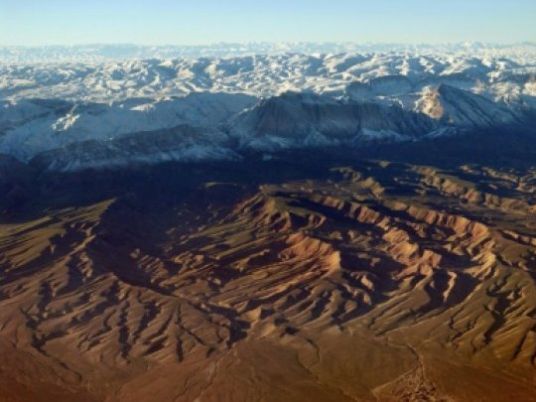
It began with a low rumbling noise. Then the rivers of mud poured down the mountainside over the Tajik village of Barssem — the latest victim of shrinking glaciers that are an alarming portent of climate change in Central Asia.
"The gorge was filled by a terrible noise – the roar of stones," said villager Shakarbek Kurbonbekov.
"The mud took everything in its path – homes, cars," he told AFP by telephone. "Those that could, escaped to higher ground. There was no time to think."
The 60-year-old man survived the disaster that hit the former Soviet republic of Tajikistan's mountainous eastern regions last month, but many others didn't — the mudslides and flooding claimed at least 12 lives and destroyed close to one hundred homes.
The wave of destruction that started with a heatwave on July 16 is a harbinger of the broader ecological change looming over landlocked Central Asia, a fractured region that relies on a stock of rapidly melting glaciers for long-term survival.
The glaciers in Tajikistan's Pamir range and the nearby Tien-Shan range in Kyrgyzstan feed the strategic Amu and Syr rivers respectively, irrigating farmland that populations have depended on for centuries.
They are receding rapidly.
According to a study published last week by the GFZ German Research Centre for Geosciences, the glacier stock in the Tien-Shan range is shrinking at four times the pace of the global average in recent decades.
The study's authors claim half the Tien-Shan's glaciers — already diminished by over a quarter from their 1961 size — will melt away by 2050.
– Warming 'undeniable' –
Evidence of warming of the Tien-Shan, which straddles Kyrgyzstan, Kazakhstan, Uzbekistan and China, is also seen in the region's mostly Soviet-built ski resorts.
Oleg Chernogorski, a tour operator with three decades of experience working in the region's mountains calls climate change "an undeniable fact" after seeing the season begin later and later over the past three decades.
"If in the 1980s and the 1990s the winter season at the Chimgan resort in Uzbekistan began on December 1, now it begins closer to New Year," he told AFP.
"Every year the ski season gets shorter due to a lack of snowfall and an absence of freezing temperatures," he said.
Elsewhere in the region a flood hit Kazakhstan's largest city Almaty after a moraine-dammed lake — a lake formed by glacial debris — perched above the settlement of 1.5 million failed to contain unusual levels of glacial melt on July 23.
Although there were no fatalities, the flooding left whole suburbs in Central Asia's second-largest settlement caked in mud and 3,000 people temporarily without electricity.
"These countries will come into contact with these types of emergencies increasingly regularly," Petr Plekhanov, a former head of Kazakhstan's Institute of Hydrogeology and Geoecology, told AFP.
"Those with more money like Kazakhstan will be able to handle disasters better. Countries like Kyrgyzstan and Tajikistan, which have lots of mountains and little money, are more vulnerable."
– Waste and war threats –
During Communist times water-sharing agreements in the formerly Soviet region were centrally regulated, but that system unravelled soon after the five countries gained independence in 1991, sparking concerns that water disputes could trigger major conflicts.
There has already been sporadic violence along border areas, and the fact that some frontiers in the region have remained imprecise following independence does not help.
This year a Kyrgyz border guard was killed in a densely-populated valley riven by tensions over river water usage between Kyrgyzstan and Tajikistan.
The two mountainous, agrarian countries have pledged to complete large dams that could reduce water access to their downstream commodity-rich neighbours Kazakhstan, Turkmenistan and Uzbekistan.
The plans are already straining ties in particular with cotton-growing Uzbekistan, a country of 30 million people whose 77-year-old President Islam Karimov has warned the dams could spark war in the region.
"In Soviet times the planning of these dams took into consideration water supply in the downstream where it was needed the most: for cotton irrigation," explains Joelle Rizk, a natural resources and conflict resolution expert.
"But now the projects are national projects."
Better water management at local and regional level could partly offset the shortages forecasted by GFZ and others.
The scientific weekly Nature said last year that gas-rich, desert-covered Turkmenistan was the world's top consumer of water per capita, with other Central Asian countries close behind.
"There is a lack of responsibility for water conservation in the region," said Plekhanov.
"So much water is lost through poor irrigation alone."
